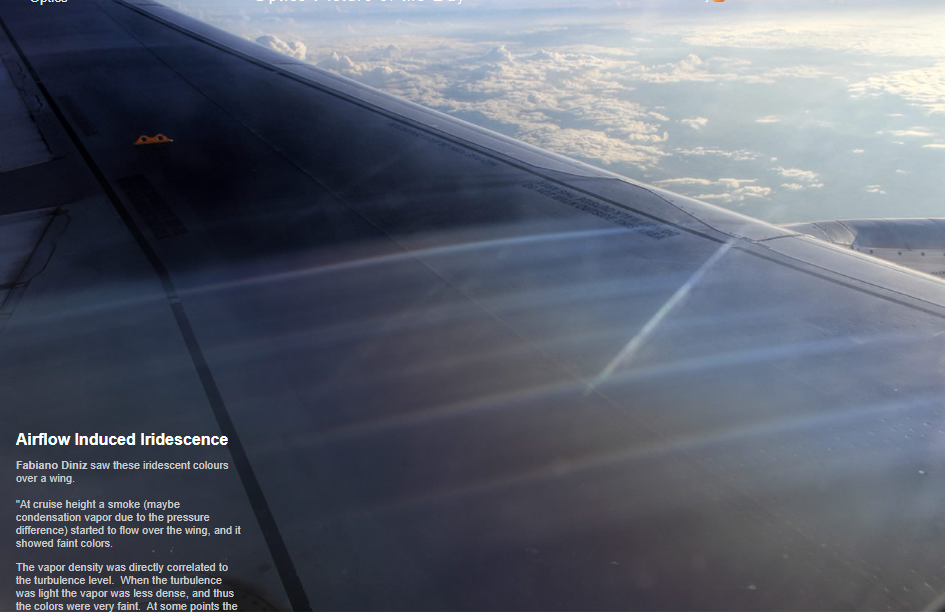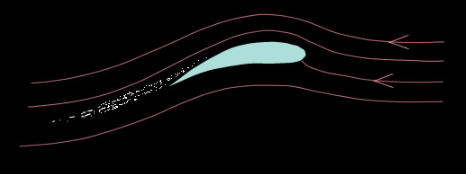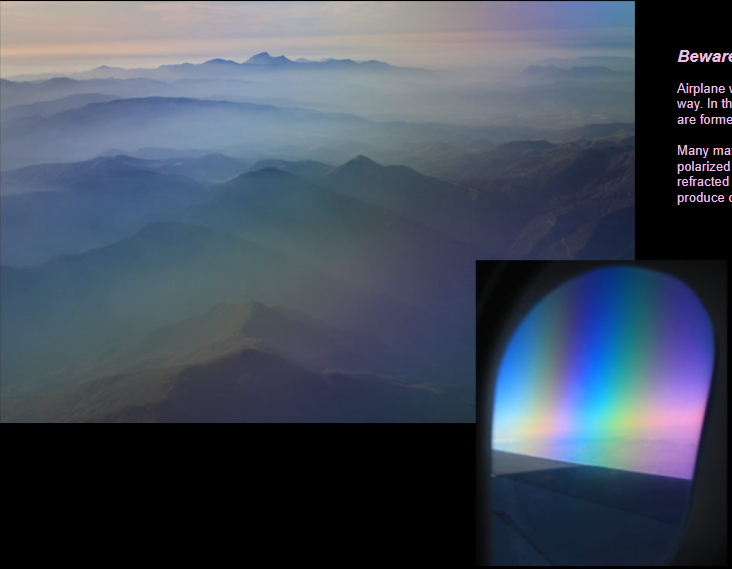Airplane induced iridescence - OPOD
Airplane Induced Iridescence: A Spectacular Phenomenon in the Sky
Have you ever looked up at the sky and witnessed a mesmerizing display of vibrant colors surrounding an airplane's wing? This captivating optical phenomenon is known as airplane induced iridescence. It occurs when sunlight interacts with small droplets in the air, creating a stunning array of iridescent hues. While this phenomenon is often associated with iridescent clouds, it can also occur around the wings of aircraft during specific atmospheric conditions.
The Science Behind Airplane Induced Iridescence
Airplane induced iridescence is a result of the interplay between airflow, humidity, and sunlight. As an airplane moves through the atmosphere, the air over its wings experiences different speeds and pressures. The upper convex surface of the wing forces the air to travel faster, causing it to expand and cool. If the humidity levels are adequate, this cooling effect leads to the condensation of water vapor into tiny droplets.
These freshly formed droplets share similar histories and sizes, which is crucial for the formation of iridescence. When sunlight passes through these droplets, it undergoes a process called diffraction. This means that the light waves bend and scatter as they interact with the droplets. As a result, the different colors of light become separated and create a dazzling display of iridescent hues.
The Influence of Turbulence on Airplane Induced Iridescence
The intensity of airplane induced iridescence can vary depending on the turbulence levels experienced during flight. When the turbulence is mild, the density of the condensation vapor is lower, resulting in faint and subtle colors. However, as the airplane encounters more significant turbulence and vibrations, the vapor becomes denser, intensifying the colors observed.
The Role of Sunlight in Airplane Induced Iridescence
The position of the sun in relation to the airplane and the observer plays a crucial role in the visibility of airplane induced iridescence. In the case of Fabiano Diniz's observation, the sun was approximately 7 degrees high and positioned to the right of the photo. This angle allowed the sunlight to interact with the droplets in a way that highlighted the iridescent colors.
Distinguishing Airplane Window Colors from Airplane Induced Iridescence
While airplane induced iridescence predominantly occurs around the wings, it is essential to distinguish it from another phenomenon that can be observed through airplane windows. In some cases, the colors seen through airplane windows are not a result of droplet diffraction but rather a phenomenon called birefringence.
Birefringence occurs when materials refract polarized light components differently, causing interference and the production of colors. By using a polarizing filter and carefully observing the scene, it is possible to differentiate between airplane induced iridescence and window birefringence. If the distant scene appears colored and the colors change with varying polarizing filter angles, then window birefringence is likely responsible for the observed colors.
Conclusion
Airplane induced iridescence is a captivating atmospheric optics phenomenon that occurs when sunlight interacts with small droplets around an aircraft's wing. The interplay between airflow, humidity, and sunlight creates a stunning display of iridescent colors that can vary in intensity based on turbulence levels. By understanding the science behind this phenomenon, we can appreciate the beauty of nature's optical wonders even more. So, next time you gaze up at the sky and witness these vibrant hues surrounding an airplane's wing, take a moment to marvel at the magic of airplane induced iridescence.

Airflow Induced Iridescence
Fabiano Diniz saw these iridescent colours over a wing.
"At cruise height a smoke (maybe condensation vapor due to the pressure difference) started to flow over the wing, and it showed faint colors.
The vapor density was directly correlated to the turbulence level. When the turbulence was light the vapor was less dense, and thus the colors were very faint. At some points the airplane shook more and the vapor got more dense, brightening the colors.
The sun was about 7 degrees high, to the right of the photo."
©Fabiano Diniz, shown with permission

The colours are from diffraction of sunlight by individual small droplets. Iridescent clouds shine the same way.
Air is forced to travel faster over the upper convex wing surface. The faster moving air expands and cools. If the humidity is sufficient, water vapour condenses into a fine droplet mist. Air beneath the wing is slowed, compressed and heated.
The freshly formed droplets all have similar histories and therefore sizes. They diffract sunlight to form the iridescent colours.

Beware!
Airplane window colours can form in a different way. In these images by Martin Izzard the colours are formed by birefringence in the window itself.
Many materials refract the components of polarized light slightly differently. When these refracted waves combine they interfere and produce colours.
The two processes can be distinguished with careful observation with a polarizing filter. If - as at left - the distant scene is coloured and the colours change with polarizing filter angle then window birefringence is very likely the culprit.
Note: this article has been automatically converted from the old site and may not appear as intended. You can find the original article here.
Reference Atmospheric Optics
If you use any of the definitions, information, or data presented on Atmospheric Optics, please copy the link or reference below to properly credit us as the reference source. Thank you!
-
<a href="https://atoptics.co.uk/blog/airplane-induced-iridescence-opod/">Airplane induced iridescence - OPOD</a>
-
"Airplane induced iridescence - OPOD". Atmospheric Optics. Accessed on April 19, 2024. https://atoptics.co.uk/blog/airplane-induced-iridescence-opod/.
-
"Airplane induced iridescence - OPOD". Atmospheric Optics, https://atoptics.co.uk/blog/airplane-induced-iridescence-opod/. Accessed 19 April, 2024
-
Airplane induced iridescence - OPOD. Atmospheric Optics. Retrieved from https://atoptics.co.uk/blog/airplane-induced-iridescence-opod/.